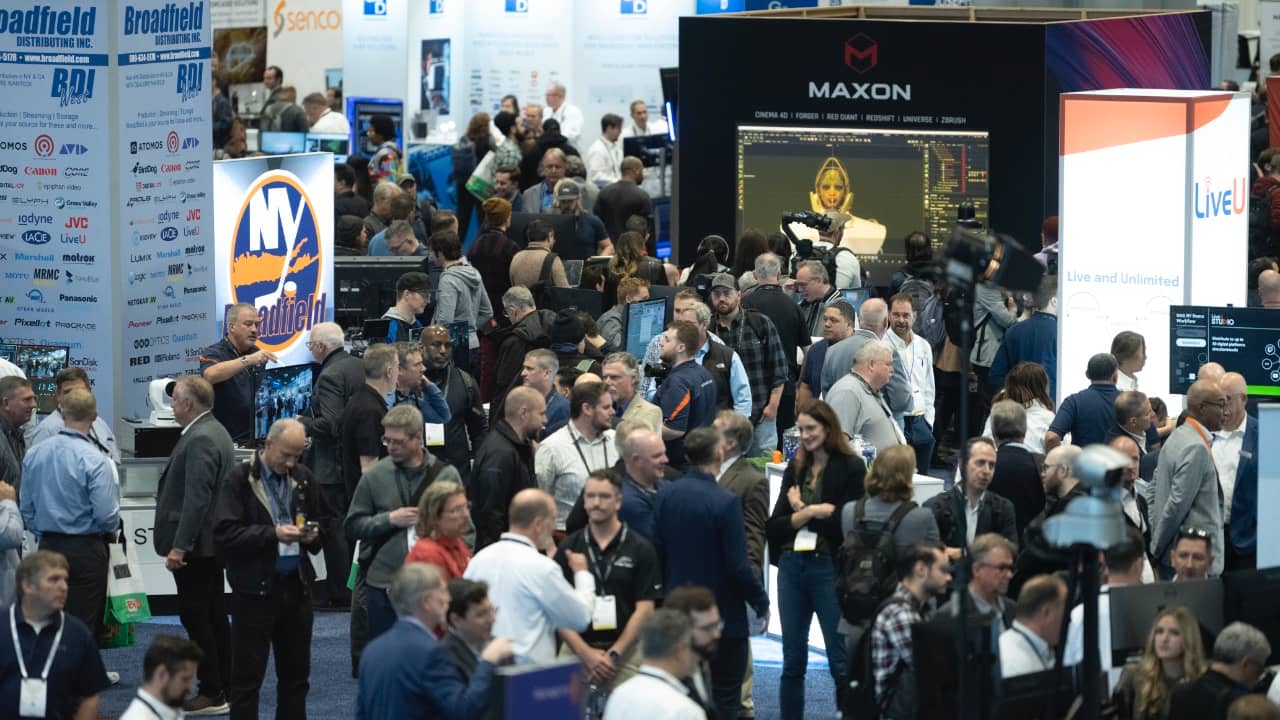
Ned Soltz on what caught his eye at NAB Show New York last week, including a photo walk with Fujinon and Frame.io, hands-on with the Sony Burano, Blackmagic’s Cinema 6K, Alteon’s cloud-savvy, Maxon’s VFX, and more.
It’s been several days since NAB New York, and I needed time to process and reflect not just on the show but also on trade shows in general.
New York has been a rough place for trade shows of late. My favorite show, PhotoPlus Expo, finally threw in the towel despite what seemed to be huge multi-day attendance, a plethora of exhibitors, and heavy marketing. But AES, held next door in conjunction with NAB, appears to be thriving, and NAB itself touted an attendance of 12,000 for this year’s NAB NYC — an increase of some 28% over last year.
While NAB hailed the 270 exhibitors — with some 60 new exhibitors — the show was understandably smaller than the Las Vegas event in April. Notably, several major vendors were absent, including Adobe, Sony, and Nikon; others had scaled-down booths or just a table. Obviously, the high cost of trade show exhibiting, a cost even higher in NYC, has to factor into a vendor’s budget.
But a trade show is more than just going to a booth, playing with the toys, and listening to a marketing spiel. In fact, some have argued that the age of the trade show is long past because everything is virtual these days. I disagree strongly. Networking, human contact, and relationship building between colleagues and between individuals and vendors is something I hope never becomes obsolete.
I’ll even give you an example. I was asking about a Resolve feature I'm just beginning to use at the Blackmagic booth (just like at NAB LV, among the largest booths). The demo person told me he’s contracted to Blackmagic and is more of a DP than a VFX guy. Well, my first love is the camera department, so it was a great connection to make, which would not have happened if I was watching a web presentation from BMD.
Here are a few highlights that caught my interest, and I hope that in the comments, others who were in attendance might add to my list.
NAB Show New York highlights
Blackmagic always gets the great spot—right by the entrance and multiple pods for their broad line of hardware and software. It was my first glance at the new $2600 Cinema Camera 6K and a run-through of some features. The Cinema 6K is in much the same form factor as the prior Pocket Cinema Cameras. This is BMD’s first foray into Pocket full-frame cameras with a move to L-mount lenses. I miss the built-in ND filters found in the Super35 cameras. Still, this camera does add an Optical Low Pass Filter (OLPF) and recording to CFExpress Type B media in addition to recording to external devices. The constantly expanding ATEM switcher line remains—and here comes a word I hate but will nonetheless use—a disrupting product in the switcher world.
We are also beginning to see Maxon exert itself in the VFX post-production space, having solidified and unified its acquisition of the Red Giant products. Particularly impressive is the 2024 product bundle Maxon One, including Cinema4D, Redshift (GPU render accelerator), plus the Red Giant products. The original flagship product, Cinema4D, sees significant speed acceleration, new Rigid Body Simulations for the Unified Simulation System, and expansion of the Pyro capabilities. We are certainly seeing consolidation of much of the VFX world into Maxon and Boris FX (not represented at this show), with each of these giants bringing their respective strengths and, in fact, more complimentary packages than competition. Maxon demos, by the way, attracted nice crowds.
The word these days, however, is cloud—and specifically cloud-based collaboration. While Adobe was not physically present, Fujifilm strongly promoted the collaboration with Frame.io with its camera-to-cloud integration. I took one of the hourly photo walks equipped with a new Fujifilm GFX 100 II medium format mirrorless camera. Outside of a severe case of pixel envy shooting a 102-megapixel sensor camera, the goal was to understand a camera-to-cloud workflow in Frame.io. In short, the workflow here was a simple one. Establish an internet connection (even via a mobile phone is great), shoot, review images, and select images for upload. Upload to whatever folder you choose on your Frame.io account, and those images are available to your collaborators in the time it takes to upload.
But the caveat here, as with all cloud-based collaborative technologies, is having an internet connection. Next week, I’ll be off the grid in the African bush, so short of carrying a satellite phone… But again—the value of the trade show. It is one thing to watch promo videos of C2C. It is yet another to be guided through it physically and see its effectiveness.
While Sony was also not physically present, except for a booth showing the broadcast-automation package Crispin, which Sony has acquired, I still had my first hands-on experience with the Sony Burano at the Abel Cine booth. I'm definitely looking forward to reviewing it when Sony has review units available. It looks like a baby Venice, and at a $25,000 price point makes it more affordable for an owner-operator with the business to monetize it.

The guy at the bottom of the escalators has some serious coffee-carrying game
Cloud collaboration with Alteon
But again, to emphasize the importance of the trade show was the opportunity to spend some time with Matt Cimaglia, founder of Alteon, discussing cloud-based collaboration in general and his Alteon.io product specifically.
Alteon’s twist on cloud-based collaboration is, as they call it, “consolidating single-purpose apps into a streamlined workflow.” Thus, users can upload footage, transcode, create proxies, can comment, and do all the things one would expect. Alteon, though, seeks to serve all levels of users, from an individual producer who may even be able to utilize a free account up to enterprise-level users with a flexible pricing structure. Particularly impressive were pricing levels based on footage needed immediately, short-term archiving (lower price), and long-term archiving (lowest price).
While not available yet, the most tantalizing feature soon to come is metadata blockchain. While we think of blockchain with crypto transactions, Alteon is working on the ability to segment file metadata using blockchains. This makes your files virtually un-hackable. But it goes beyond that into actual file provenance. Changes in content are reflected in the metadata, and it is possible to determine who made a change and when. Again, it is not just an anti-hacking tool but also crucial in determining who has accessed the file and when while iterating content. Alteon is definitely a company to watch and seems to be looking beyond merely the upload-comment-share-collaborate model.
Were any of our readers present and have more observations to share? Please let us know in the comments. And now let’s all get ready for NAB Las Vegas April 13-17, 2024. And the 2024 NAB Show New York will be held October 8-10, 2024 (Exhibits October 9-10).
Tags: Production


Comments